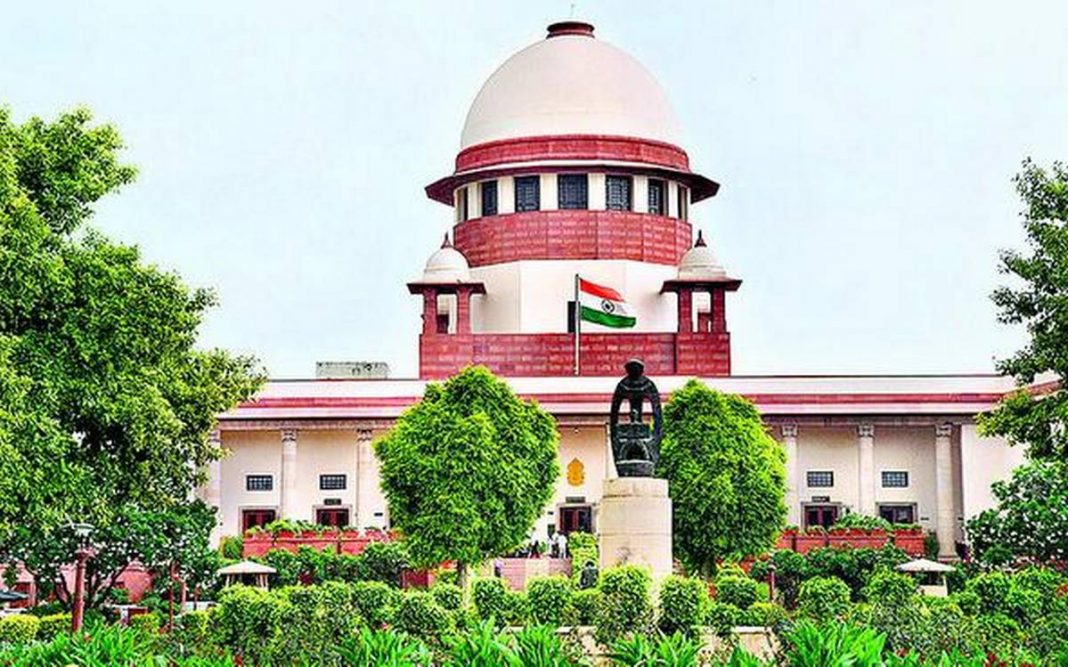A court in Uttar Pradesh has asked the Archaeological Survey of India to investigate the claim of a Hindu petitioner that the Gyanvapi mosque at Varanasi was created by destroying a Hindu temple. Another court has admitted a petition to hand over the Shahi mosque at Mathura to those claiming it was the birthplace of Krishna. Yet another court has admitted a suit seeking the handover of temples allegedly destroyed to build the Qutub Minar complex in Delhi.
This threatens endless new communal battles that were supposed to end with the Places of Worship Act 1991 that froze the religious status of all shrines as of August 15, 1947, ending pending suits and banned fresh ones.
In its Babri Masjid verdict, the Supreme Court praised this Act and said “non-retrogression is a foundational feature of the fundamental constitutional principles, of which secularism is a core component.” The Act and Supreme Court’s language were unambiguous. Yet lower courts are admitting petitions in clear contravention of the Act and the Supreme Court’s interpretation.
The Act makes it criminal to attempt religious takeovers. Logically, the Hindu petitioners in the new cases should be prosecuted. If instead lower court judges admit such suits, are they not ignoring the law and committing contempt of the Supreme Court?
Some liberals despair that the Supreme Court no longer protects secularism and is pro-Hindutva. That is a gross exaggeration. Liberals should petition the Supreme Court to reprimand the erring judges in UP and uphold the sanctity of the of the 1991 Act.
Let none deny that conquerors through history looted and destroyed places of worship. Aurangzeb destroyed a temple to build the Gyanvapi mosque in Varanasi. Historians like Richard Eaton record that Hindu kings conquering other Hindu kings also looted their temples, not just for money but to emphasise that the old order had been replaced by the new. For instance, in 642 AD. the Pallava king Narasimhavarman conquered the Chalukyas, looting and destroying their royal temple.
Some conquerors espoused a new religion. They sometimes built a shrine for their new religion after destroying the existing shrine, re-using stones and pillars from the ruins. Sometimes a place of worship was converted wholesale into one for the new religion. The greatest example is the Hagia Sophia in Istanbul, a magnificent Byzantine church converted to a mosque by Ottoman conquerors.
But conversions in the opposite direction were also common. The Grand Mosque in Cordoba, Spain, was built in 764 AD. It was not destroyed after Christian re-conquest, but in the 13th century its central portion was converted into a cathedral. A Wikipedia search reveals 16 Spanish mosques converted to churches. Portugal has three such conversions, notably of the Aljama mosque in Mertola. Other notable conversions include the Ibrahim Pasha mosque in Greece, the Black Mosque in Bulgaria and Pasha Asim mosque in Hungary. Three mosques in Israel have become synagogues.
History brims with conquests changing the character of places of worship. But the answer cannot be to re-fight every historical battle — that will stoke eternal religious conflict. The word and spirit of the Indian Constitution swear by secularism, which will be destroyed by re-fighting every ancient quarrel.
Not many know that several mosques in India were converted to temples, mainly in the hate-filled rage of India’s partition. The Jama Masjid in Sonipat, Haryana, was converted to a Durga Mandir. It has classical Muslim domes and minarets, so no Archaeological Survey inquiry is required to show that its religious character was changed.
Farrukhnagar, Haryana, had a Jama Masjid built in 1732, which was converted to a Hindu temple and gurudwara after the mass arrival of refugees from Pakistan after partition. The building still has three typical Muslim domes and two minarets, one half destroyed.
The Jama Masjid built by the Khilji dynasty in Aurangabad is now a Bharat Mata temple. The Dana Shir mosque in Hisar became a Bhagwan Danasher temple after India’s partition riots.
This raises an interesting question. If the courts entertain suits for the Hindu reclamation of mosques in Varanasi and other places, must they not simultaneously consider the Muslim reclamation of all the mosques converted to temples? After all, the Constitution clearly bans discrimination on the ground of religion. Yet converting temples to mosques will spark communal riots.
Ideally, the Supreme Court should halt all the suits in the lower courts. Meanwhile, it has been asked to hear a suit challenging the constitutional validity of the 1991 Act. One of many reasons to uphold the Act is that religious takeovers have historically happened in both directions, and trying to correct all historical wrongs is a recipe for constantly stoking hate and disastrous violence.
This article was originally published in The Economic Times on April 18, 2021.


